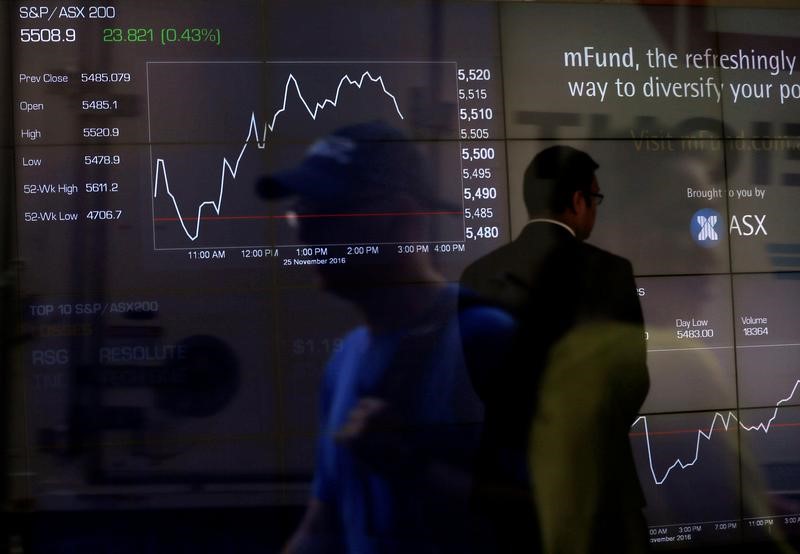The ASX is down today. Unable to recover despite a midday bounce, the market closed with a 0.67% or 49.2-point loss at 7,305.40.
The Australian bourse was dragged down by faltering US markets, which each shed more than 1% after a run of gains last month.
The Australian dollar also suffered today, lagging on lower-than-expected retail sale figures after the RBA’s interest rate hold applied its own downward pressure yesterday.
Overall sales volumes were down 0.5% this quarter in the retail sector, indicating the rapid-fire rate rises may be starting to take effect.
The AUD lost more than 1% last night, now sitting at US$0.6536 at the time of writing.
The sectors were in the red just about across the board, with only Communication Services (+0.06%) escaping while Info Tech (-1.82%) and Materials (-1.15%) took the biggest hits.
Commodities were in a similar place, just palladium gaining 0.32% as all other spot prices fell. Nickel (-3.57%) and West Texas Crude (-2.95%) took the brunt.
Overall, the index has lost 2.02% over the last five days and sits 3.47% below its current 52-week high.
Inflationary pressures begin to ease
The Reserve Bank’s decision to pause rates once again might’ve clued us in, but inflation seems to be abating across western economies, with headline rates falling and oil and other commodity prices soft.
That doesn’t mean we’re out of the woods just yet – food prices are of growing concern, given Russia’s war on Ukraine has severely hampered crop sales from the Black Sea, and El Nino may fully materialise yet, heating global temperatures and reducing rainfall.
“These need to be watched closely,” Netwealth chief economic strategist Gerard Lyons said in NetWealth’s latest Market Insights newsletter.
“As we have stressed before, core inflation is proving stubborn in many countries, suggesting inflation may not settle at 2% post this crisis, but perhaps slightly higher.
“That may raise questions as to how tough central banks may wish to be in proving their anti-inflationary credentials.
“In turn, for markets, the key is what this means for monetary policy. Has monetary policy already tightened too much and is there further tightening to come and if so, by how much?
“The most significant recent development was the Bank of Japan’s shift away from ultra-cheap money. Its approach to tightening is clearly going to be gradual.
“Meanwhile, the US Federal Reserve, European Central Bank and Band of England remain cautious, but are nearing the end of their tightening cycle.”
Lyons believes policy rates should be left on hold for now, as inflation is easing and previous measures are still filtering through – the economy is only seeing modest growth, and a recession is possible if policy tightens further, he cautions.
“Interestingly, the monetary policy debate has already started to shift towards policy easing across a number of emerging economies (although this definition continues to look more out of place by the day),” Lyons said.
“China has already eased, albeit gradually, with a focus on adding liquidity, and small cuts in rates. But monetary policy easing is likely elsewhere.
“Many emerging economies were far more prudent in their monetary policies before the pandemic.
“Alongside China, two of the most interesting to keep an eye on might be Chile and Brazil, as they were early to tighten as inflation took hold and might perhaps be early on the way down.
“Indeed, this focus on emerging economies is vital for understanding global growth dynamics and where we are in the economic cycle, and why disinflation may be the new buzzword over the remainder of this year.”
The Five at Five
Stellar Resources hits 160-metre copper-bearing zone at North Scamander, Tasmania
Stellar Resources Ltd (ASX:SRZ) has followed up a previous 38.9-metre interval of visually confirmed zinc-lead-copper mineralisation (stockwork veining) with a further 160 metres of copper-prospective core at the North Scamander Project in northeast Tasmania in the same drill hole.
Read more
Tietto Minerals sets record Abujar gold production in July; appoints Clinton Bennett as COO
Tietto Minerals Ltd (ASX:TIE) produced 11,643 ounces of gold in July, its highest monthly output, as the company continues to ramp up production at the 3.83-million-ounce Abujar Gold Project in Côte d’Ivoire.
Read more
Cooper Metals raising up to $2 million to drill-test pipeline of copper-gold targets at Mt Isa East
Cooper Metals Ltd (ASX:CPM) is raising up to $2 million to step up exploration efforts, including drilling, at high-priority copper-gold targets in the Mt Isa East Project within the resource-rich Mt Isa region of northwest Queensland.
Read more
Australian Strategic Materials signs long-term agreement with USA Rare Earth to supply neodymium iron boron alloy
Australian Strategic Materials Ltd (ASX:ASM) has inked a five-year binding sales and tolling framework agreement with USA Rare Earth, LLC (USARE).
The agreement was made through ASM's wholly owned subsidiary, ASM Korea Co., Ltd, and is set to strengthen ASM's strategic supply relationships with the US magnet production industry.
Read more
Buru Energy charts course to commercialise Rafael gas condensate discovery
Buru Energy Ltd (ASX:BRU, OTC:BRNGF) has solidified its path to commercialisation at the wholly-owned and operated Rafael discovery in Western Australia’s Canning Basin — the first proven significant conventional gas and condensate field in the region.
Read more
On your six
Oncology stocks advance at pace despite lukewarm market
The oncology sector – like most of the healthcare sector – has been struggling post-COVID boom, faltering in the face of a tight financial market reluctant to shell out capital in the traditionally riskier biotech sector.
Read more
One to watch
Lodestar Minerals intersects significant copper at Earaheedy
Lodestar Minerals Ltd (ASX:LSR, OTC:LSMLF) MD Ed Turner tells Proactive the company has seen significant copper intersections in its first Earaheedy aircore drilling program in WA.
Read more
